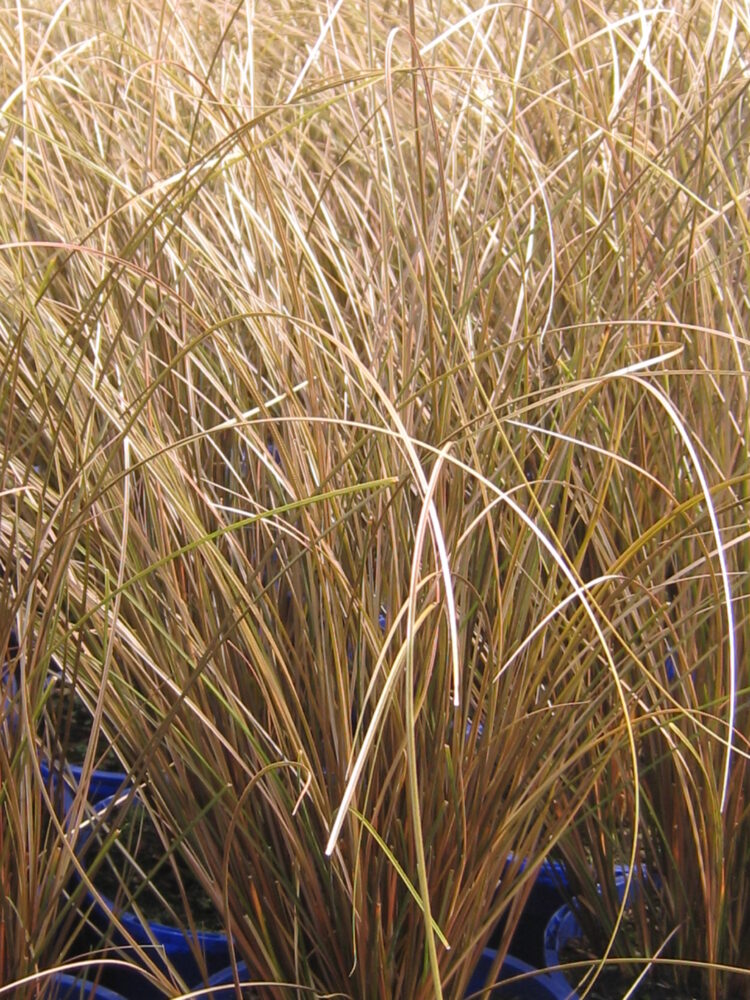Description
Carex species are commonly known as sedges and are a species of perennial grass-like plants. They are often grown alongside other ornamental grasses and can be combined in prairie planting schemes with plants like Echinacea and Rudbeckia to great effect. It is a large genus with over 1000 species so there is a sedge for almost any location, however as a general rule they do not like very dry soils or deep shade. They typically grow into circular mounds with the foliage flowing from the centre outwards.
Key Facts
- Common Name(s):Sedge Milk Chocolate
- Hardiness:Half hardy and would benefit from protection through Winter.
- How big will I get? Carex comans ‘Milk Chocolate’ can grow to a height of 0.1-0.5m and a spread of 0.1-0.5m.
- Did You Know That:The reason Carex are not classified as true grasses is due to the flowering stems being solid rather than hollow as in ordinary grasses.
Plant Calendar
A rough guide to how this plant will change through the year.
| Jan | Feb | Mar | Apr | May | June | July | Aug | Sept | Oct | Nov | Dec | |
| Foliage Colour |  |
 |
 |
 |
 |
 |
 |
 |
 |
 |
 |
 |
| J | F | M | A | M | J | J | A | S | O | N | D |
 |
 |
 |
 |
 |
 |
 |
 |
 |
 |
 |
 |
Care Guide

Soil Requirements
Carex comans ‘Milk Chocolate’ prefers moist but well-draining soil. This plant can grow in soil with a wide range of pH levels, it is not picky about the pH level of the soil.

Best Position
Carex comans ‘Milk Chocolate’ can handle either an exposed or a sheltered position and can cope with either full sun or partial shade.

Maintenance
Carex comans ‘Milk Chocolate’ will benefit from any dead foliage being removed in Summer to promote new, fresh growth and keep the plant looking nice and healthy.

Pest, Diseases and Wildlife
Carex comans ‘Milk Chocolate’ can have problems with aphids, and it tends not to have problems with diseases. It is not considered to be toxic.





